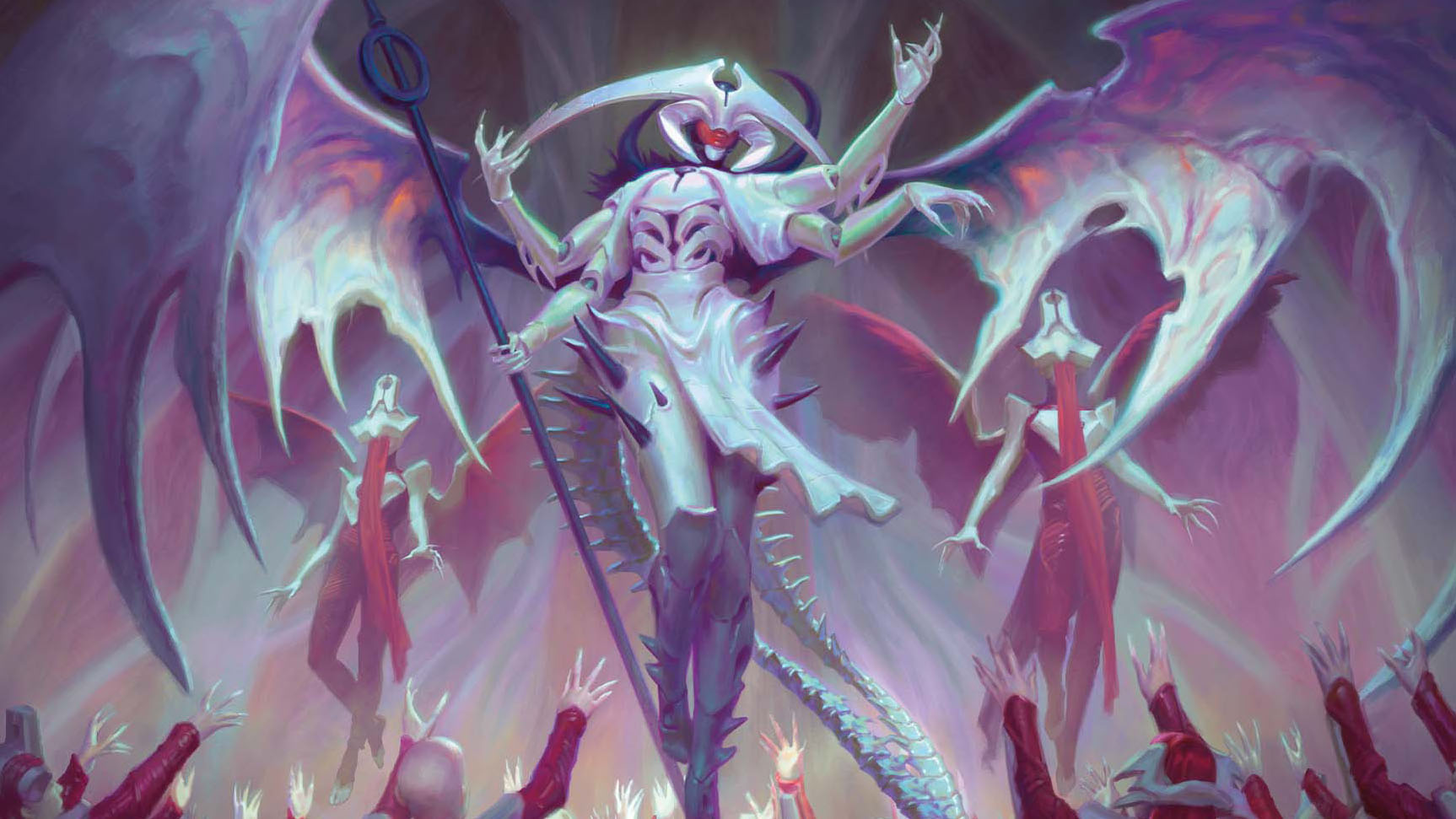
Zero-to-One: Phyrexian New Horizons
Between today (February 6th, 2023) and the upcoming Punt City 2 tournament (March 25th, 2023), Wizards of the Coast will release Phyrexia: All Will Be One (ONE), a new Standard set that returns our attention to the former plane of Mirrodin after the Phyrexian conquest & subsequent remodeling. This new set introduces a total of 34 new legendary Commanders, many of which have interesting abilities that may serve as a strong foundation for a new Commander deck.
However, the question remains to be asked – if you have committed to bring something new to Punt City 2, which of these legendary creatures may have the greatest probability of success in tournament-level Commander play as the Commander?
Let’s find out.
The Framework
Evaluating a Commander for tournament-level play involves assessing a complex web of interactions, from seating probability to which types of pods you’re likely to see to which lines of play you want your deck to focus on. The standard way to deal with this – and other decisions of similar complexity – is to use a framework. These algorithmic-like constructs are essentially a heuristic, designed to save time & mental energy by codifying a set of assumptions to speed up an evaluation, a decision, or a process. We use frameworks all the time in our lives, from rough rules on how to find a significant other to what restaurant we want to eat at to, you guessed it, what type of Commander deck we want to play.
The most common framework for evaluating Commanders for tournament play is to see whether the Commander a) creates resources (usually card draw), and/or b) serves as a win condition (i.e. can end the game in a reasonably achievable circumstance). However, as I detailed previously, this framework may be too limiting for Commander to evolve as a competitive format in its exclusion of key nuances. For example, it doesn’t consider return on investment – what you need to spend either in terms of deck slots or mana within live play to achieve the effect – which is a critical component in how a Commander may perform in a game.
For today’s exercise, I’ve gone ahead & sketched out the points-based framework that I use when evaluating new Commanders for tournament-setting brewing. Here’s how it works:
- Simple checklist format; nothing too complex or analytical
- Fulfillment of each criterion awards 1 or 2 pts based on weighting
- The more points, the higher the likely viability in a tournament setting

Imagine a 10-pt Commander. Scary.
These elements are not new to cEDH. However, formalizing (at least initially) their relative contribution to tournament viability vis-à-vis ‘established’ understanding can serve as a foundation for further exploration. In layman’s terms, a chart helps people brew so let’s make a chart; it certainly helps me.
Secondly, note that this is designed to evaluate cards as the Commander, not as inclusion into the 99. In fact, many of the legendary creatures in ONE may find homes in the 99 existing archetypes.
Finally, this rubric is, like all frameworks, something that will evolve over time. A framework is only as good as how useful it is – and anything that changes our fundamental understanding of Commander, including tournament results, has the potential to change a framework designed to describe it. Pragmatically, this is also my way of saying if you disagree with this framework, find something you want to change, or believe there are better ways of approaching the question of ‘what is tournament-setting Commander viable,’ that’s ok. What matters most isn’t how different specific points of view are, but which combination of viewpoints lends to the greatest chance of success (however you like to define it).
With that out of the way, let’s evaluate all 34 new Legendary creatures from ONE / ONC for their potential viability in tournament Commander.
The Table

I’m not going to write a commentary on every single one. Instead, here are my thoughts on a few Commanders I find particularly interesting based on the above:
Glissa, Sunslayer
Outside of Slicer – which is more sly than anything else – tournament Commander play has not seen a Voltron-like strategy since the days of Ishkai / X Partner builds (though a few Ardenn / X builds do see success from time to time). This is because Voltron strategies typically have trouble generating card advantage, are easily disrupted (‘dies to Doom Blade’ to the max), and require a high amount of card slots to make happen either in the form of Equipment or Auras. While Glissa doesn’t solve all of these problems, her ability to at least net you an extra card each turn cycle (as most players are loathe to block with a mana dork or a stax creature for fear of losing advantage and First Strike creatures that can trade with her are rare in the current metagame) gives her some amount of promise. I’d at least explore what cards in the current card pool may work well with her to get a sense of just how many card slots you’d need to dedicate if you were to run her as Commander.
Elesh Norn, Mother of Machines
I debated strongly about whether Elesh Norn was more of a 3 or a 4 because of card slots. There is no question Elesh Norn is powerful, but much of her utility as a Commander depends on the density of ETB effects present. Technically, this means that in a mono-White deck, a large portion of your slots that would be going to mitigate White’s disadvantage relative to other colors in card draw will instead be ETB effects – which is a pretty high cost of deck building. Still, Elesh Norn’s ability is powerful enough that she may still be competitively viable even if she requires a higher amount of investment in deck-building.
Beyond the card evaluation itself, Elesh Norn showcases that this framework is useful not only as a measuring stick but also as a way to identify what areas you may need your deck to focus on. One can read Elesh Norn’s ‘3’ score as ‘not competitively viable’ and there’s logic in that. However, as I wrote above, one can also interpret the 3 scores (specifically the lack of 1 pt in Cost of Synergy) as an area to focus on; if I build my deck so every card synergizes with Elesh Norn, I ‘gain’ 1 pt. This shows that the framework serves two purposes – one as a general yardstick for quick assessments, and one as a diagnostic for how to tune your Commander if you’re dead set on taking it to the limit of viability for tournament play.
Atraxa, Grand Unifier
One element the framework does not include is how Commanders synergize with ‘packages’ (i.e. does this Commander make a Grixis Thoracle / Breach core better or worse). Atraxa’s low score showcases this blind spot in the framework.
While one can look at Atraxa and see an expensive ETB card draw effect, what Atraxa’s colors represent is a Sultai Food Chain core + white protection (Grand Abolisher and the like) with a Commander as a win condition. This easy matching in terms of Atraxa’s color identity and an established & well-understood package in the 99 may be enough. The framework does express this interaction as well, for if Atraxa can serve consistently as a win condition in this fashion, she’ll earn +2 pts to bring her up to 6, making her much more tournament-viable than many other options.
Ovika, Enigma Goliath
Of all the Commanders in ONE / ONC, Ovika is the one I am most interested in. Disregarding her (its?) mana cost, Ovika essentially makes every noncreature spell – including artifacts! – better, allowing her (it?) to grind advantage or explode into a pivotal turn. She (it?) also comes with relevant protection, as we’ve seen from Tivit how Ward can play a crucial role in keeping a Commander on the board in a meta with light spot removal. While she (it?) is extremely expensive at 7MV to cast, only allows for two colors, and doesn’t draw you cards, her (its?) passive ability, potential as either a way to grind advantage or win the game and scalability / ubiquity for deck building makes her (it) worth a look. Besides, I heard Blood Moon & Back to Basics are incredibly disruptive in our current meta of ‘run fewer lands’ and ‘3+ color decks are the best.’
Final Thoughts
Whether you are excited to brew something from ONE / ONC, or whether you are revisiting previously printed Commanders for tournament-level Commander play, I hope this framework is helpful for you in your cEDH journey. To me personally – and I hope to many of you, seeing new ideas achieve success in tournament play is one of the major reasons to stay engaged with the format. Accordingly, the development of any commentary, frameworks, or tools that keeps that spirit of innovation alive & prevents the format from growing stale is something I aspire my writing to help support. As a famous restauranter once said-
“You must always evolve. If the restaurant were still like it was the day we opened, it would be old!”
See you next time – with something new.
-WY






Comment
Join the conversation